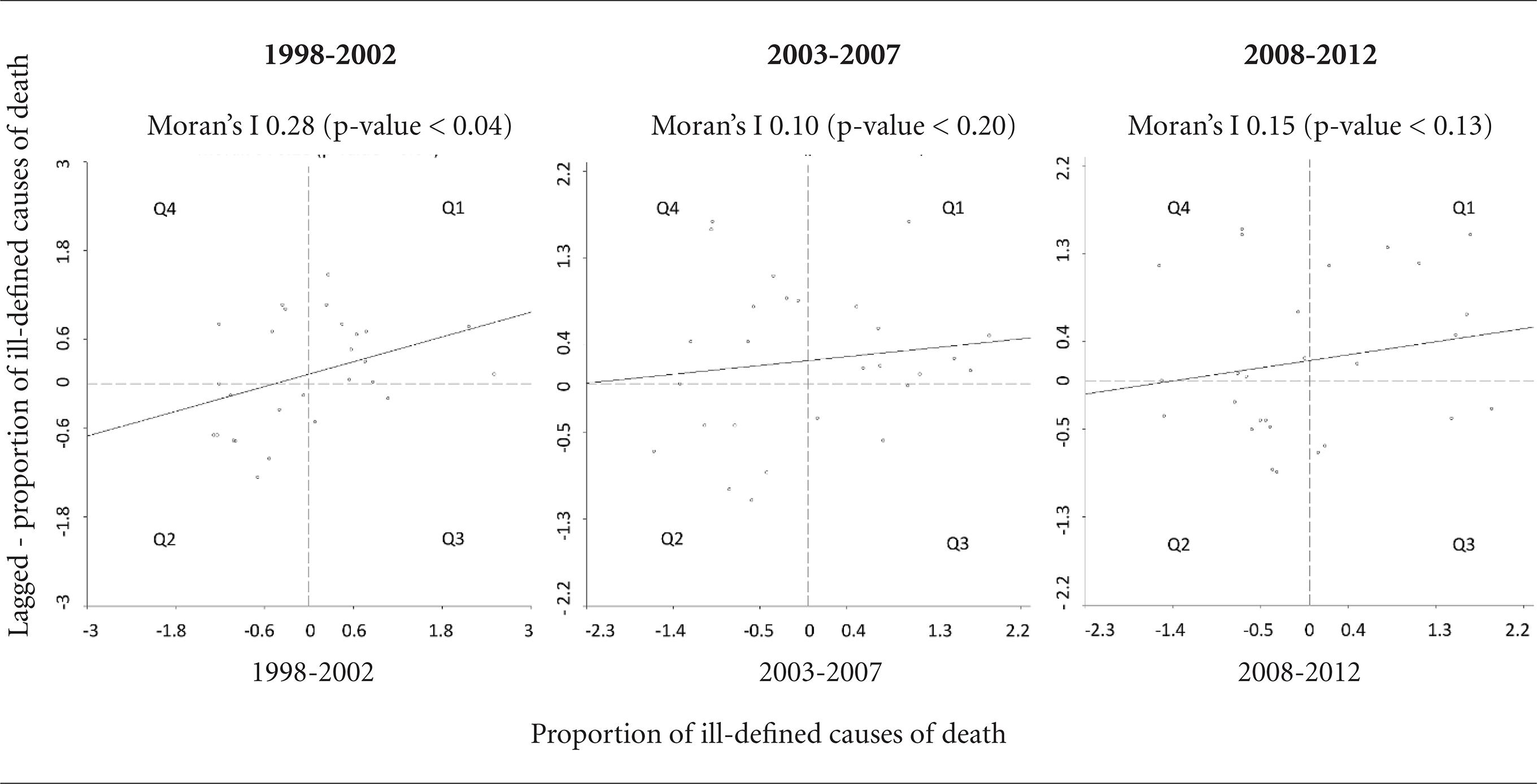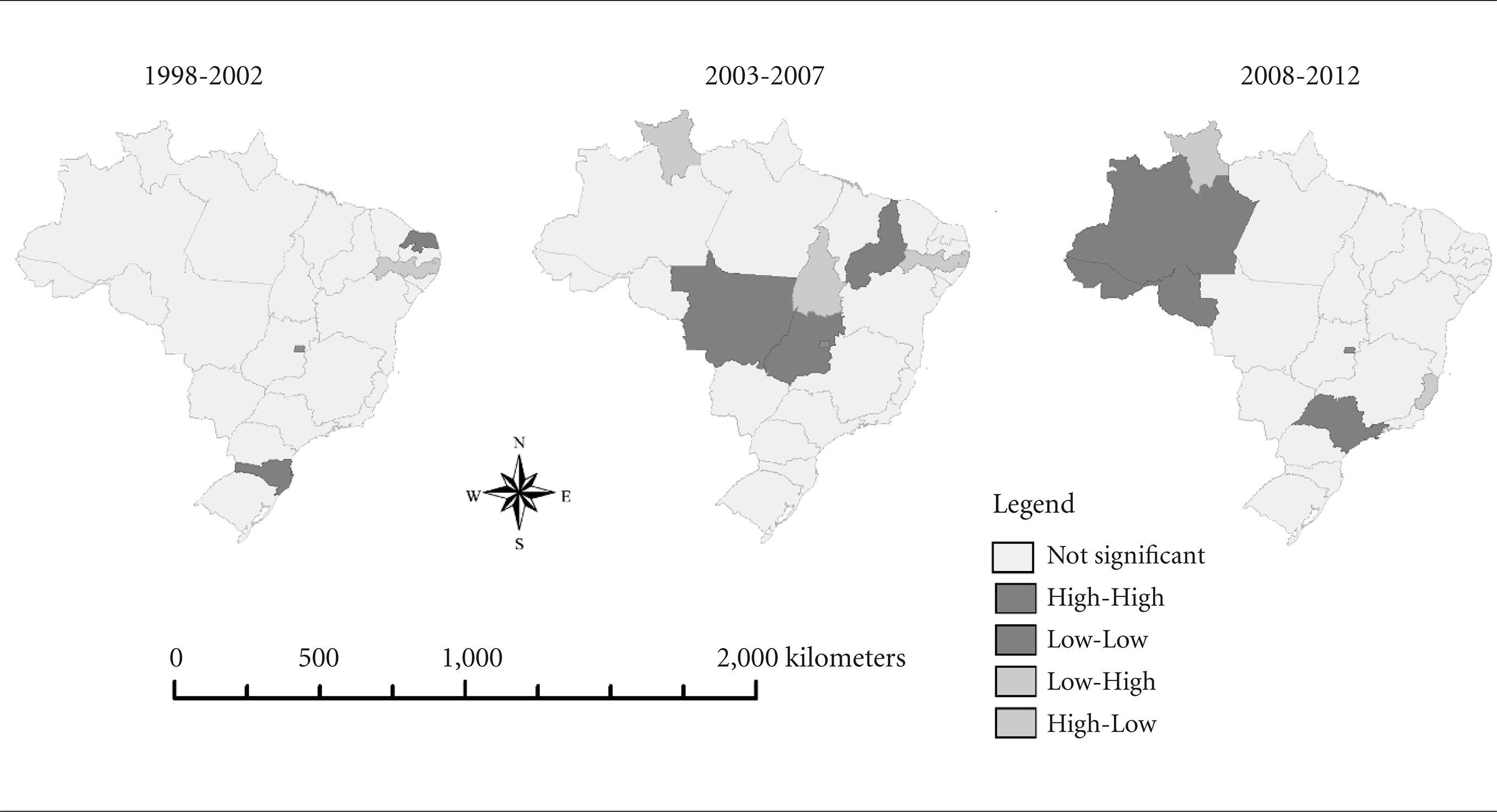Abstract
This study describes the spatial-temporal changes of the proportion of ill-defined causes of death in Brazil (1998-2012) and investigates which demographic and socioeconomic factors affect this proportion. We collected information of the proportion of ill-defined causes of death by age (15-59 years), sex, period, locality, and socioeconomic data. We used a multilevel Poisson model to investigate which factors affect the risk of ill-defined causes of death. Unlike states located in the South and Midwest, we detected clusters with high proportional levels of these deaths in states in the North and Northeast regions. A greater proportion occurred in 1998-2002 (0.09), in the North and Northeast (0.14 and 0.12, respectively), in older age groups (0.09), and in places with poor socioeconomic conditions. The adjusted analysis showed differences in proportion according to the region, age, period, schooling, social inequality, and income. The results indicate that the lower the age group and the better the socioeconomic situation, the lower the risk to register the cause of death as ill-defined. Although over the past years, the quality of Brazil’s mortality data has gradually increased, investments towards improving mortality registries cannot be discontinued.
Mortality; Cause of death; Vital statistics; Mortality registries; Multilevel analysis

 AC = Acre; AL = Alagoas; AP = Amapá; AM = Amazonas; BA = Bahia; CE = Ceará; DF = Distrito Federal; ES = Espírito Santo; GO = Goiás; MA = Maranhão; MT = Mato Grosso; MS = Mato Grosso do Sul; MG = Minas Gerais; PA = Pará; PB = Paraíba; PR = Paraná; PE = Pernambuco; PI = Piauí; RJ = Rio de Janeiro; RN = Rio Grande do Norte; RS = Rio Grande do Sul; RO = Rondônia; RR = Roraima; SC = Santa Catarina; SP = São Paulo; SE = Sergipe; TO = Tocantins.
AC = Acre; AL = Alagoas; AP = Amapá; AM = Amazonas; BA = Bahia; CE = Ceará; DF = Distrito Federal; ES = Espírito Santo; GO = Goiás; MA = Maranhão; MT = Mato Grosso; MS = Mato Grosso do Sul; MG = Minas Gerais; PA = Pará; PB = Paraíba; PR = Paraná; PE = Pernambuco; PI = Piauí; RJ = Rio de Janeiro; RN = Rio Grande do Norte; RS = Rio Grande do Sul; RO = Rondônia; RR = Roraima; SC = Santa Catarina; SP = São Paulo; SE = Sergipe; TO = Tocantins.
 The quadrants Q1, Q2, Q3 and Q4 represent the four types of spatial autocorrelation: high-high (Q1), low-low (Q2), high-low (Q3) and low-high (Q4).
The quadrants Q1, Q2, Q3 and Q4 represent the four types of spatial autocorrelation: high-high (Q1), low-low (Q2), high-low (Q3) and low-high (Q4).
